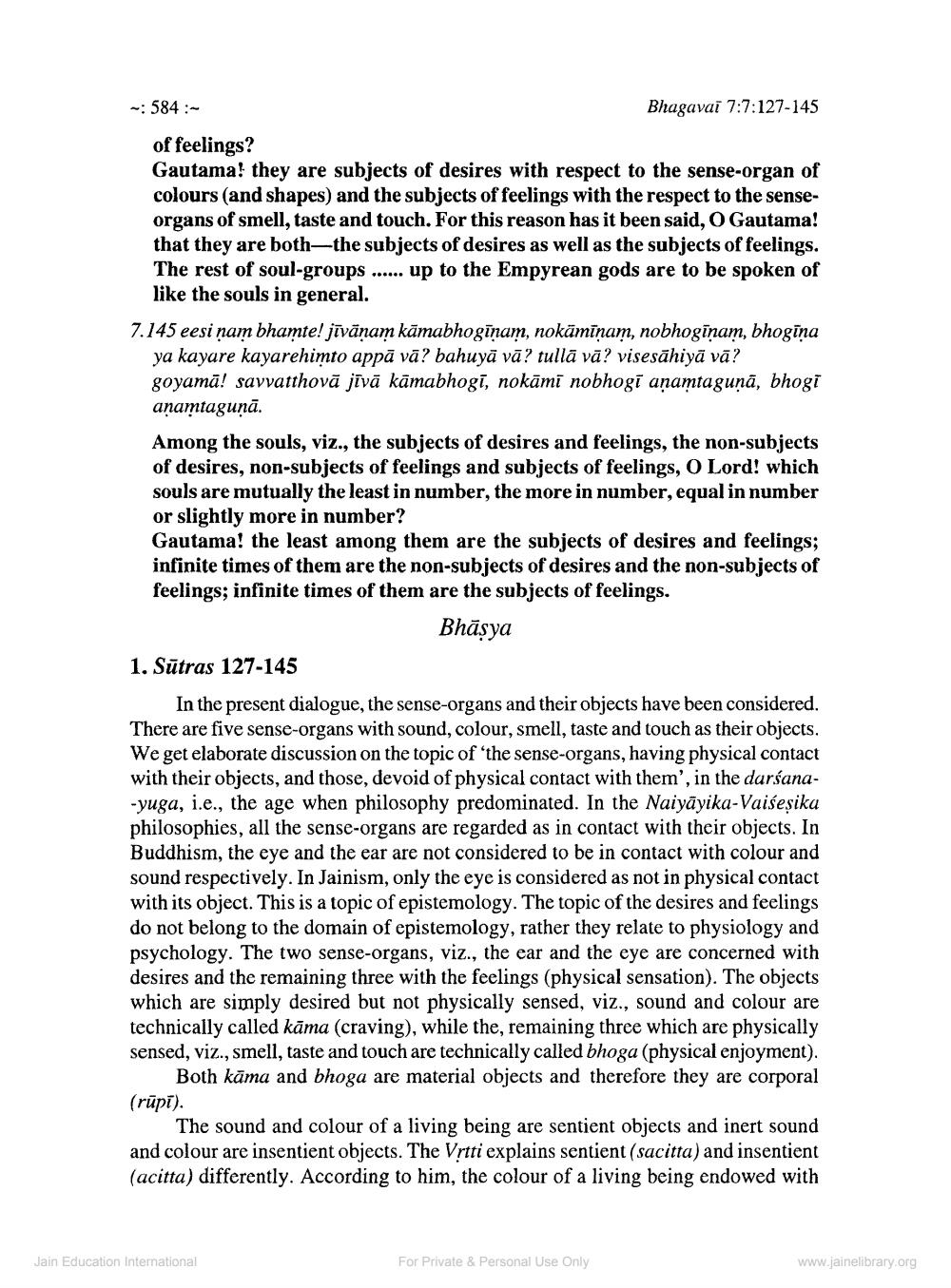________________
-: 584:
Bhagavai 7:7:127-145
of feelings? Gautama! they are subjects of desires with respect to the sense-organ of colours (and shapes) and the subjects of feelings with the respect to the senseorgans of smell, taste and touch. For this reason has it been said, O Gautama! that they are both—the subjects of desires as well as the subjects of feelings. The rest of soul-groups ...... up to the Empyrean gods are to be spoken of
like the souls in general. 7.145 eesi nam bhamte! jīvānam kāmabhogīnam, nokāmīnam, nobhogīnam, bhogīna
ya kayare kayarehimto appā vā? bahuyā vā? tullā vā? visesāhiyā vā? goyamā! savvatthovā jīvā kāmabhogi, nokāmi nobhogi anamtagunā, bhogi anamtaguņā. Among the souls, viz., the subjects of desires and feelings, the non-subjects of desires, non-subjects of feelings and subjects of feelings, O Lord! which souls are mutually the least in number, the more in number, equal in number or slightly more in number? Gautama! the least among them are the subjects of desires and feelings; infinite times of them are the non-subjects of desires and the non-subjects of feelings; infinite times of them are the subjects of feelings.
Bhāsya 1. Sūtras 127-145
In the present dialogue, the sense-organs and their objects have been considered. There are five sense-organs with sound, colour, smell, taste and touch as their objects. We get elaborate discussion on the topic of the sense-organs, having physical contact with their objects, and those, devoid of physical contact with them', in the darśana-yuga, i.e., the age when philosophy predominated. In the Naiyāyika-Vaiseșika philosophies, all the sense-organs are regarded as in contact with their objects. In Buddhism, the eye and the ear are not considered to be in contact with colour and sound respectively. In Jainism, only the eye is considered as not in physical contact with its object. This is a topic of epistemology. The topic of the desires and feelings do not belong to the domain of epistemology, rather they relate to physiology and psychology. The two sense-organs, viz., the ear and the eye are concerned with desires and the remaining three with the feelings (physical sensation). The objects which are simply desired but not physically sensed, viz., sound and colour are technically called kāma (craving), while the, remaining three which are physically sensed, viz., smell, taste and touch are technically called bhoga (physical enjoyment).
Both kāma and bhoga are material objects and therefore they are corporal (rūpī).
The sound and colour of a living being are sentient objects and inert sound and colour are insentient objects. The Vrtti explains sentient (sacitta) and insentient (acitta) differently. According to him, the colour of a living being endowed with
Jain Education International
For Private & Personal Use Only
www.jainelibrary.org




